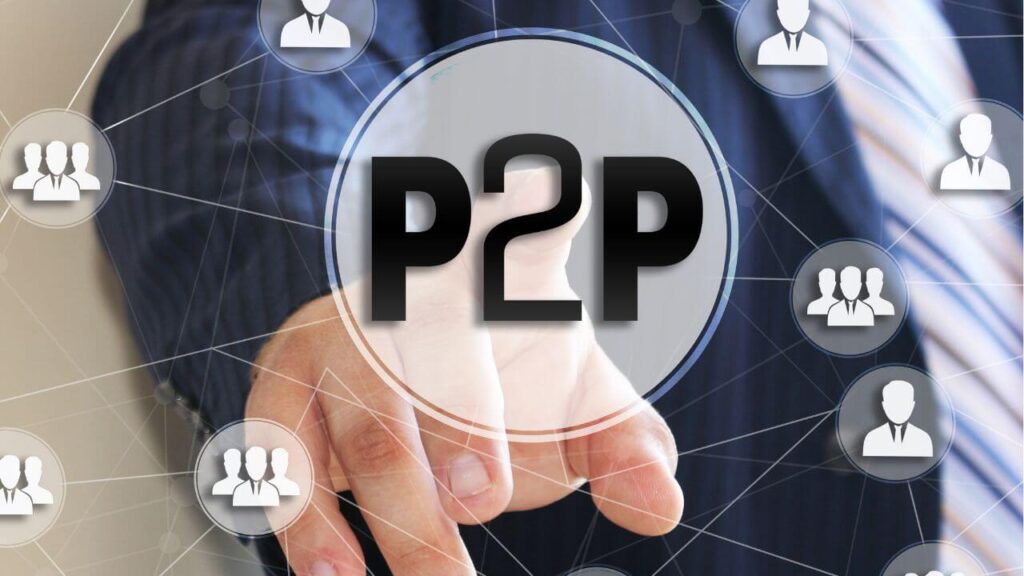What is Peer to Peer Lending ?
Peer-to-peer (P2P) lending is a type of online platform that allows individuals to borrow and lend money directly without the need for intermediaries like banks. The process typically involves a P2P platform that connects borrowers to investors willing to lend their money for a specified interest rate.
On a P2P lending platform, borrowers can apply for a loan by submitting their personal and financial information, as well as the amount of money they need and the duration of the loan. Investors can then browse through loan requests and select which ones they want to fund. Once the loan is fully funded, the borrower receives the money and starts making repayments to the investors over a specified period.
How is Peer to Peer lending Different from Bank Lending ?
Peer-to-peer (P2P) lending and bank lending are different in several ways. Here are some of the key differences:
- Intermediary: P2P lending connects borrowers directly to individual investors, while traditional bank lending involves a financial institution acting as an intermediary between the borrower and the lender.
- Interest rates: P2P lending typically offers lower interest rates to borrowers than traditional bank lending because it operates with lower overhead costs. At the same time, investors can earn higher returns through P2P lending than they might get from other types of investments.
- Loan approval process: P2P lending platforms use their own criteria to evaluate borrowers, which can include credit checks, employment history, and other factors. In contrast, traditional bank lending typically involves a more rigorous application process that may require collateral or a high credit score.
- Loan size: P2P lending platforms usually offer smaller loans than traditional banks, with most loans ranging from a few hundred to a few thousand dollars. Traditional banks, on the other hand, can offer much larger loans.
- Collateral: P2P lending platforms generally do not require collateral for loans, whereas traditional banks often require borrowers to put up collateral such as property or other assets to secure the loan.
Categories | P2P Personal Loans | Traditional Personal Loans |
|---|---|---|
Providers | Individual Investors | Banks, Credit Unions, Online Lenders |
Secured vs Unsecured | Typically Unsecured | Secured and Unsecured |
Interest Rate | 7% to 36% | 5% to 36% |
Fees | Origination Fee | Origination Fee |
Credit Score Requirements | Fair Credit | Good or Excellent Credit |
Pre-Qualification | Available | Available |
Ease of Use | More streamlined than traditional lenders | Can be lengthy and Cumbersome |
Who Can Benefit from Peer to Peer Lending ?
Peer to Peer lending can benefit various individuals, including:
- Borrowers: P2P lending can be a useful option for borrowers who have difficulty obtaining loans from traditional lenders, such as banks. Borrowers who are self-employed, have a lower credit score, or have a limited credit history may find it easier to secure financing through P2P lending.
- Investors: P2P lending can offer investors an opportunity to earn higher returns than they might get from other types of investments, such as savings accounts or certificates of deposit (CDs). By lending money directly to borrowers, investors can earn interest on their investment.
- Small business owners: P2P lending can be a good source of funding for small business owners who may have difficulty obtaining loans from traditional lenders. P2P lending platforms can offer small business loans with lower interest rates than those offered by banks, which can be particularly helpful for startups or businesses with limited credit histories.
- Individuals seeking to consolidate debt: P2P lending can offer individuals a way to consolidate multiple high-interest debts into a single loan with a lower interest rate. This can help reduce overall interest costs and make it easier to manage debt payments.
How Can You Make Money Through Peer to Peer Lending ?
There are two main ways to make money through Peer to Peer lending:
- Lending money to borrowers: As a lender, you can earn money by lending money to borrowers through a P2P lending platform. The platform will match you with borrowers who meet your investment criteria, and you can choose which loans to fund. The borrower will then pay back the loan with interest, and you will receive a portion of the interest payments as your return on investment. P2P lending can offer higher returns than traditional investment options, but it also comes with higher risks.
- Investing in P2P lending platforms: Another way to make money through P2P lending is by investing in P2P lending platforms themselves. Many P2P lending platforms are privately held companies that offer shares to investors. By investing in a P2P lending platform, you can benefit from the platform's growth and success. However, investing in private companies also comes with risks, and it's important to carefully evaluate the company's financials and growth prospects before investing.
What are the Peer to Peer Investing Risks ?
Peer to peer lending can offer investors the opportunity to earn higher returns than traditional investment options, but it also comes with some risks. Here are some of the Peer to Peer Lending risks that lenders should be aware of:
- Risk of borrower default: Borrowers may default on their loans, which means they are unable to repay the loan as agreed. This can result in a loss of investment for the lender.
- Limited liquidity: P2P loans are not as liquid as other types of investments, such as stocks or bonds. Lenders may have to wait until the loan term is complete before they can access their funds.
- Limited regulation: P2P lending platforms are not as heavily regulated as traditional banks, which means there may be fewer protections for lenders.
- Risk of fraud: There is a risk that borrowers may misrepresent themselves or their financial situation, which can lead to a higher risk of default.
- Interest rate risk: The interest rate offered by P2P loans can be affected by changes in market conditions or borrower creditworthiness, which can affect the return on investment for lenders.
Overall, lenders considering P2P lending should carefully evaluate the risks and benefits and diversify their investments to minimize risk. It's important to thoroughly research borrowers and loan requests before investing and to avoid investing more than can be afforded to lose.
Best Peer to Peer Lending Platforms
There are many peer-to-peer (P2P) lending platforms available, each with their own strengths and weaknesses. Below are some of the best Peer to Peer Lending platforms to consider:
BEST FOR YOUNGSTERS
Upstart Peer to Peer Lending
Upstart is a Peer to Peer lending platform that specializes in personal loans. The platform was founded in 2012 and uses a proprietary artificial intelligence (AI) credit model to assess borrower creditworthiness and determine interest rates. Upstart offers loans of up to $50,000 with terms ranging from 3 to 5 years.
Upstart's AI model analyzes a variety of factors, including education, employment history, and income, to determine creditworthiness. This allows Upstart to provide loans to borrowers who might not qualify for traditional bank loans. Upstart's platform also allows borrowers to check their eligibility and receive loan offers without impacting their credit score.
Investors can fund Upstart loans and receive monthly repayments with interest. Upstart's platform is known for its fast and efficient loan process, with loans often funded within one business day. The platform has a strong track record of loan performance, with a default rate below industry averages.
Upstart has received recognition for its innovative use of AI technology in the lending industry and has been recognized as a leading P2P lending platform. The company's mission is to provide affordable and accessible credit to individuals and help them achieve their financial goals.
BEST FOR SMALL BUSINESSES
Funding Circle Peer to Peer Lending
Funding Circle is a Peer to peer lending platform that specializes in small business loans. The platform was founded in the United Kingdom in 2010 and has since expanded to the United States, Germany, and the Netherlands. Funding Circle connects investors with small business owners who need funding to grow their businesses.
Funding Circle's lending model is based on marketplace lending, which allows investors to lend money directly to borrowers without the need for a traditional bank. Borrowers can apply for loans of up to $500,000, and Funding Circle uses a proprietary credit-scoring model to assess borrower creditworthiness and determine interest rates. Investors can choose which loans to fund and receive monthly repayments with interest.
Funding Circle's platform is known for its fast and efficient application process, with loan decisions often made within 24 hours. The platform has a strong track record of loan performance, with a default rate below industry averages. Funding Circle has facilitated over $15 billion in loans to date and has helped thousands of small businesses grow and thrive.
BEST FOR IMMEDIATE CASH UP TO $1000
Solo Funds Peer to Peer Lending
Solo Funds is a peer to peer lending platform that specializes in short-term loans for individuals who need immediate cash. The platform was founded in 2018 and uses a proprietary credit-scoring model to assess borrower creditworthiness and determine loan terms. Solo Funds offers loans of up to $1,000 with repayment terms of up to 35 days.
Solo Funds' lending model is unique in that it allows borrowers to access cash immediately from a network of lenders. Borrowers can apply for loans through the Solo Funds app and receive loan offers within minutes. Lenders can then fund loans and receive interest on their investment.
Solo Funds' platform is known for its fast and efficient loan process, with loans often funded within minutes of approval. The platform has a strong focus on financial inclusion and aims to provide access to credit for individuals who might not qualify for traditional bank loans. Solo Funds also offers financial education resources to help borrowers improve their financial literacy.
While Solo Funds' loan terms are relatively short, the platform's loans can be useful for individuals who need cash quickly to cover unexpected expenses or bridge financial gaps. The platform has received recognition for its innovative approach to P2P lending and its focus on financial inclusion.
BEST FOR FIRST TIME BORROWERS/ INVESTORS
Kiva Peer to Peer Lending
Kiva is a Peer to Peer lending platform that allows individuals to lend money to entrepreneurs and small business owners in developing countries. The platform was founded in 2005 and has facilitated over $2.7 billion in loans to date. Kiva loans have a repayment rate of over 97%, and the platform has been recognized for its social impact and innovative business model.
Kiva's lending model is based on microfinance, which provides small loans to individuals who don't have access to traditional banking services. Kiva partners with microfinance institutions (MFIs) in developing countries to identify borrowers and facilitate loans. Lenders can browse through borrower profiles on the Kiva website, choose which loans to fund, and receive regular updates on the borrower's progress.
Kiva loans are interest-free, but lenders can choose to make a donation to Kiva to support the platform's operating expenses. Kiva's mission is to alleviate poverty and promote economic development by connecting lenders with borrowers who need funding to start or grow their businesses.











